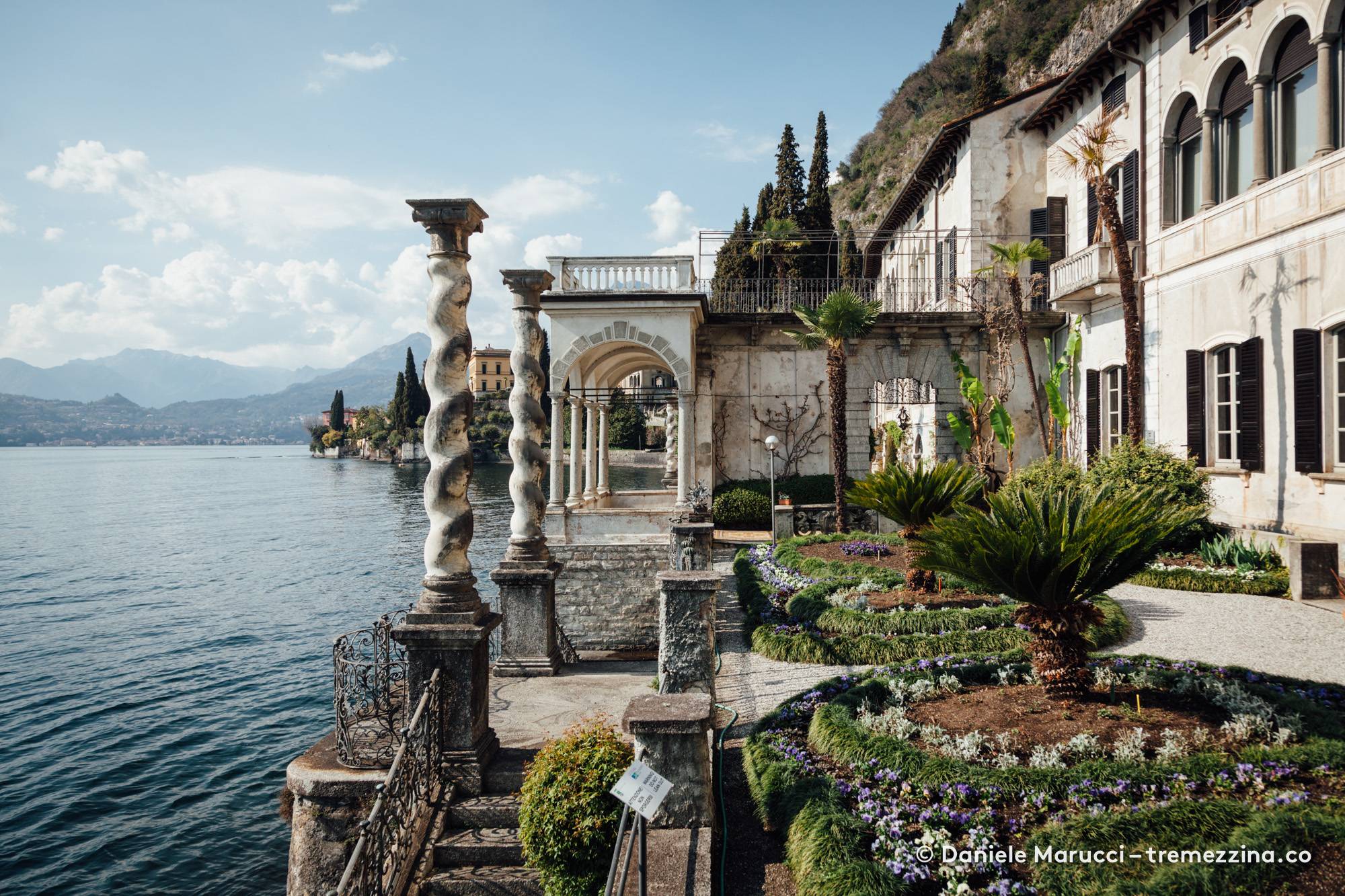
What to do and see in Varenna
One of the most visited and fascinating villages of Lake Como is certainly Varenna, situated on the eastern branch of the lake, a few kilometres far from the town of Lecco.
An ancient fishing village, it enchants tourists from all over the world thanks to its wealth of history, art, architecture and culture.
Walking along an ups and downs of narrow streets and alleys, among characteristic coloured houses, ancient churches and enchanting gardens, you will discover wonderful corners and extraordinary views.
Here are our advice and suggestions on what to do and visit in this beautiful village on Lake Como.
___
1. The village of Varenna
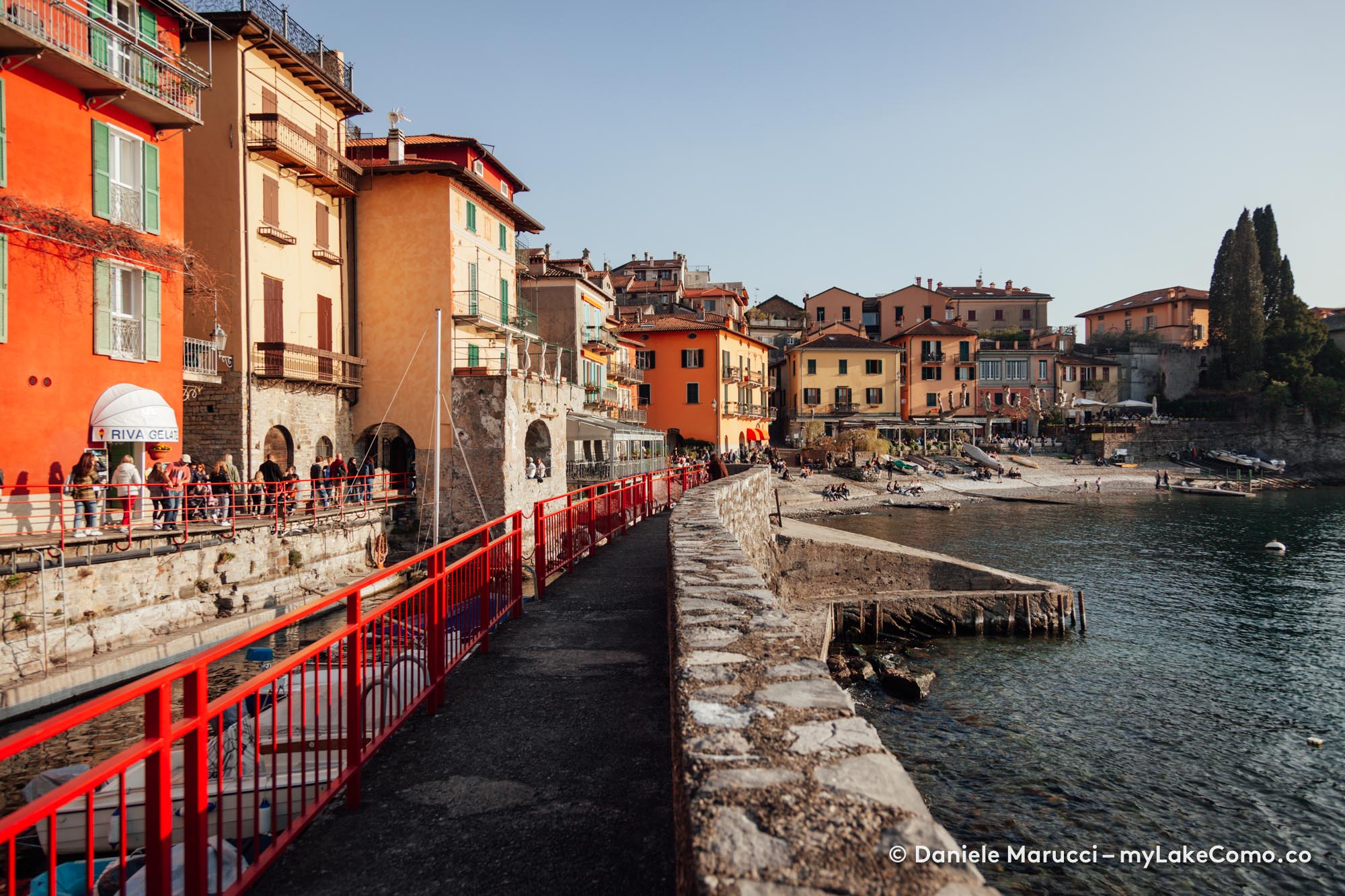
It can be reached along the famous lovers’ promenade, a walkway overhanging the water that leads from the landing stage to the centre of the village.
The Borgo, with its typical colourful little houses on the lake shore and the narrow streets crowded with tourists, is full of characteristic little shops, cafes, restaurants overlooking one of the most suggestive corners of Varenna, the Riva Grande, a beautiful inlet with breathtaking views of Lake Como.
The central square of the village, overlooked by the parish church of San Giorgio and the Town Hall, is located in the upper part of Varenna, which can be reached through the many narrow streets that branch off the lake. From there in a few minutes you can reach all the main attractions and points of interest.
2. Attractions
Villa Monastero
Villa Monastero, a historic mansion overlooking the shores of the lake, is certainly one of the main attractions of Varenna.
The central nucleus of the complex is represented by the House Museum, which in 2004 obtained the museum recognition from the Lombardy Region and is entirely accessible to the public with its itinerary that develops in 14 rooms entirely furnished, with original decorations and furniture. In this Larian villa there is also a Conference Centre known internationally for the physics lessons held in 1954 by the Nobel Prize winner Enrico Fermi, while, still today, the Italian Physics Society organizes its courses every year at Villa Monastero.
The Villa is surrounded by a Botanical Garden which extends for almost 2 kilometres along the lake front from Varenna to Fiumelatte. The complex offers opportunities for recreation and learning thanks to the presence of numerous and rare native and exotic tree species that today reach the remarkable number of over 900 specimens that have allowed it to obtain the regional recognition of Botanical Garden. Thanks to the particularly mild climate typical of the lake, this garden is home to botanical rarities from all over the world.
If you love exhibitions, keep in mind that in the villa there is also a space that host always interesting temporary exhibitions.
Opening Hours
Days and hours House Museum 2020
- October and until 1st November: Tuesday to Sunday from 10 a.m. to 6 p.m.
- November: 8-15-22-29 from 10 a.m. to 5 p.m.
- December: 6-7-8-13-20-26-27-28-29-30-31 from 10 a.m. to 5 p.m.
—
The gardens of Villa Cipressi
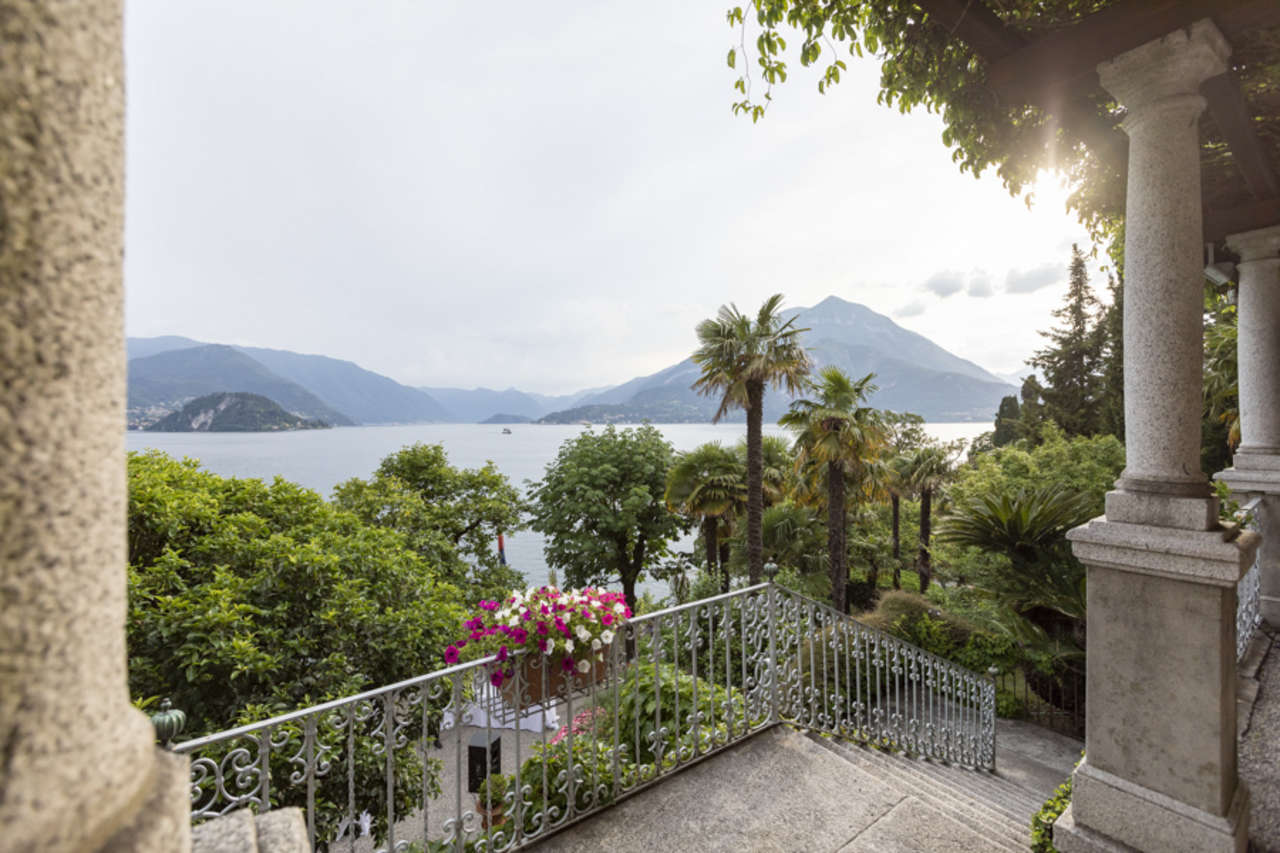
Another attraction not to be missed in Varenna is Villa Cipressi, a prestigious complex of ancient buildings built between 1400 and 1800 surrounded by splendid gardens. Today it is used as a renowned hotel, restaurant and conference centre, but the park can also be visited by external visitors, with a single or joint entrance ticket to Villa Monastero.
Strolling through its magnificent botanical garden, a mix of contemporary architecture and ancient gardens, with steps and terraces leading down to the lake, is a unique experience.
Thanks to the favourable climatic conditions, which allow the development of unusual species in northern Italy, it is possible to admire luxuriant specimens of American agave, some dating back to the middle of the 19th century. The garden also includes a beautiful collection of Agavaceae and Mediterranean species such as arbutus, myrtle, pittosporum, tamarisk, palms in various species, sapling oleanders and cypresses, subtle and elegant. There are also rare specimens of the Californian Cupressus macrocarpa (Monterey cypress).
A signposted route guides visitors through flowering borders that follow one another in the seasons: after the camellias and azaleas bloom in summer gardenias, hydrangeas and rose bushes and the flowerbeds are filled with annual blooms. Winter is also full of emotions: among the evergreen foliage of cypresses, holm oaks and magnolias you can smell the scents of calicanthus, mahonia and sarcococca. In spring, on the other hand, there is the wisteria, which shades the pergola: the perfect place for a break overlooking the lake.
Opening Hours
- January: 1-2-3-4-5-6 from 10.30 a.m. to 4.30 p.m.
- February: 9-16-23 from 10.30 a.m. to 4.30 p.m.
- March: Saturday – Sunday: 10 a.m. – 5 p.m.
- April: daily 10.00 a.m. – 6.30 p.m.
- May: Saturday – Sunday: 10.00 a.m. – 7.30 p.m.
- June: daily 10.00 a.m. – 7.30 p.m.
- July, August: daily 10.00 a.m. – 7.00 p.m.
- September, October: daily 10.00 a.m. – 6.00 p.m.
Closed from Monday 26th October 2020.
Last day to visit the garden Sunday 25th October 2020.
Reopening scheduled for spring 2021.
—
The castle of Vezio
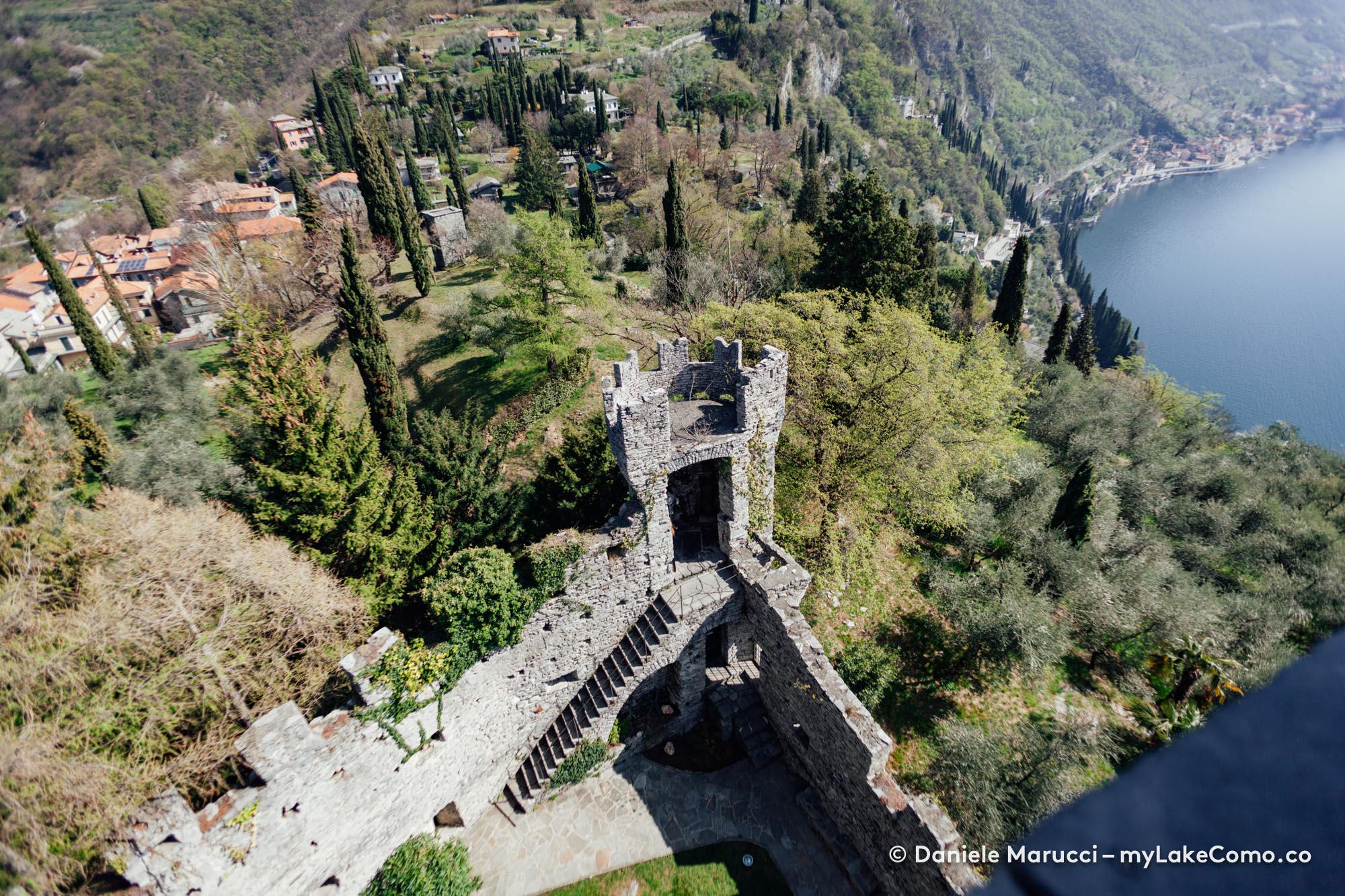
Situated in a militarily and commercially strategic place from which the entire centre of Lake Como is dominated and for this reason inhabited since the Iron Age, the Castle was associated in the past with the village of Varenna and connected to it by two long arms of walls that encircled it up to the lake, protecting the village and its inhabitants during the frequent wars and looting that upset the territory during the whole Middle Ages.
Partially restored in the middle of the 20th century, today the Castle has a watchtower, accessible by a small drawbridge and can be visited up to the top, surrounded by a wall with a partial corner tower.
Immersed in the greenery of one of the northernmost olive groves in the world, thanks to the thermoregulation effect of the waters of the lake, the Castle, open for visits from March to November, occasionally hosts exhibitions of works of art of various kinds in the garden and permanently, inside the tower, an exhibition on the Lariosaurus, a prehistoric sea reptile that came to light for the first time in the world a few hundred metres from the Castle.
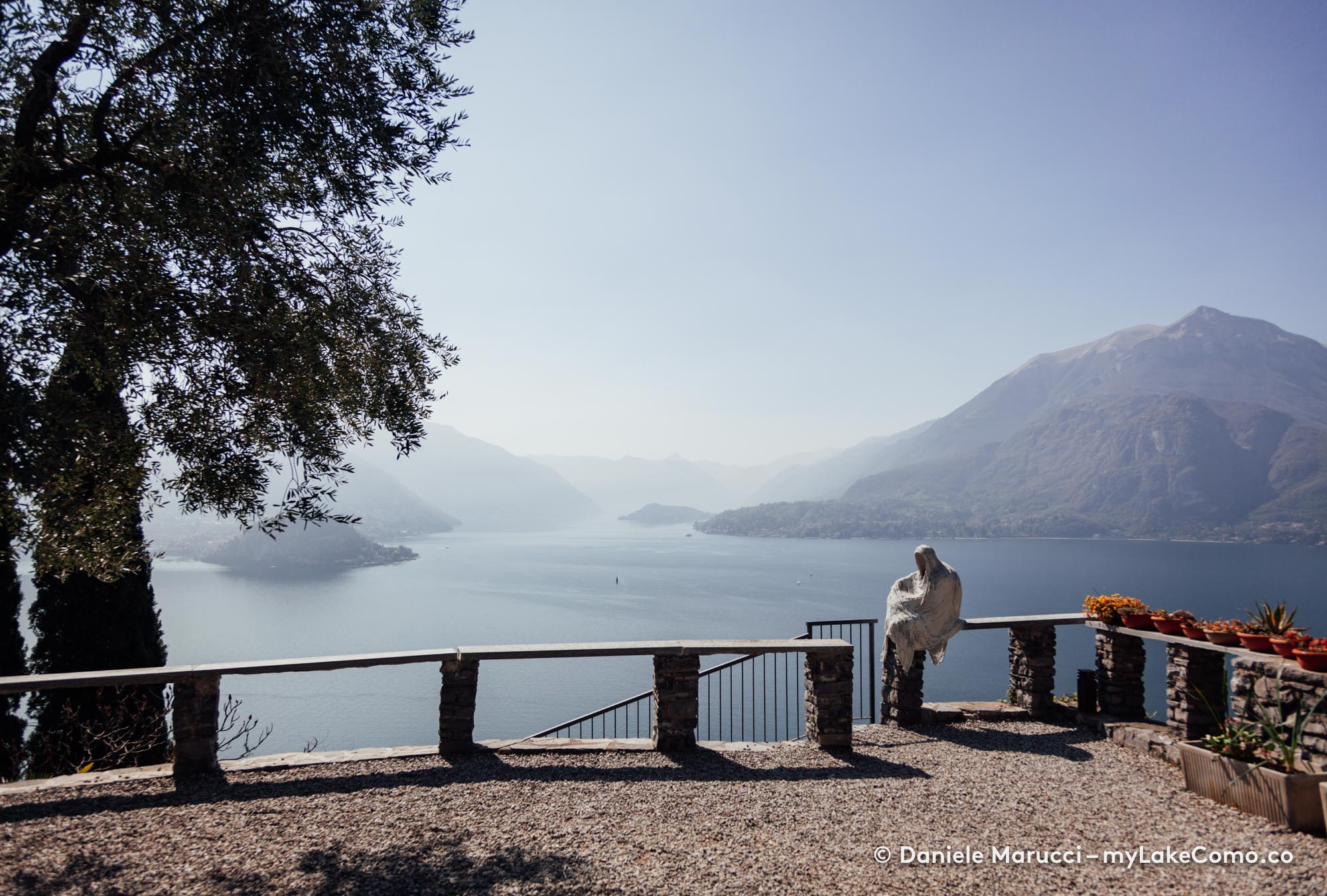
With its partially visitable basements, statues and “ghosts” scattered in the garden, the castle is the perfect place to relive the history and atmosphere of the past, immersed in a context of unparalleled beauty.
Don’t miss the afternoon falconry show, particularly appreciated by families and children. The raptors of the small training and recovery centre, every day (weather permitting), perform spectacular flights, guided by falconers dressed in period costumes.
Opening Hours
- March: Monday – Friday: 10 a.m. – 5 p.m. / Saturday – Sunday: 10 a.m. – 6 p.m.
- April – May: Monday – Friday: 10 a.m. – 6 p.m. / Saturday – Sunday: 10 a.m. – 7 p.m.
- June – July – August: Monday – Friday: 10 a.m. – 7 p.m. / Saturday – Sunday: 10 a.m. – 8 p.m.
- September: Monday – Friday: 10 a.m. – 6 p.m. / Saturday – Sunday: 10 a.m. – 7 p.m.
- October: Monday – Friday: 10 a.m. – 5 p.m. / Saturday – Sunday: 10 a.m. – 6 p.m.
—
Exhibition and Conference Centre
To exhibition lovers, we suggest a visit to the Exhibition and Conference Centre “Rosa e Marco de Marchi”, in Via Roma.
It is a Multipurpose Hall inaugurated in 2013 in which, from March to October, cultural events and interesting exhibitions follow one another.
3. Churches
Church of San Giorgio
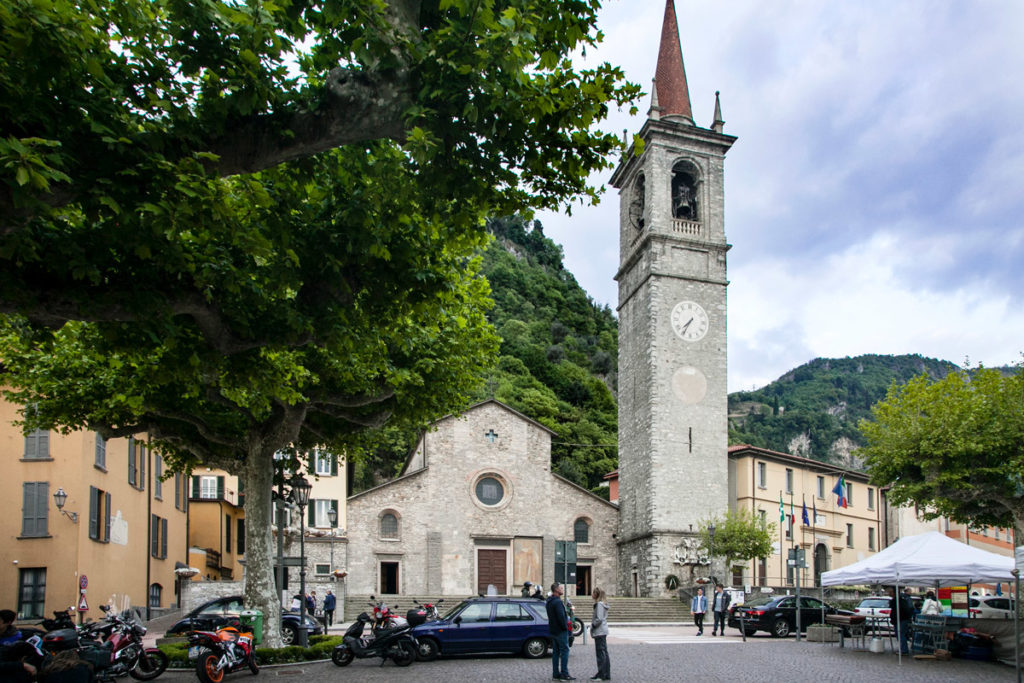
The parish church of St. George dates back to the 13th century and is situated on the square of the same name in the centre of Varenna.
Built on a small temple dating back to the 12th century and reworked in later periods, it was rediscovered after several restorations in the second half of the 20th century as an example of medieval Lombard architecture. A particular feature of the church, which immediately catches the eye, is the presence, on the façade, of a large fresco depicting St. Christopher, patron saint of ferrymen, with his cloak lined with ermine skins.
The structure has three naves and is flanked by a bell tower of 1653, which replaced the original Romanesque one. As well as stopping to admire the architecture, it is also worth taking a tour inside, which is full of remarkable well-preserved works of art.
Among these, not to be missed:
- The Polyptych of S. Giorgio by Jo Pietro de’ Brentanis (1467), a local artist who is part of the Giotto art of upper Italy. Composed of three panels and seven panels of different sizes, it depicts the Virgin enthroned with Child, flanked on her sides by St. George and St. Peter the Martyr. On the sides there are four panels: S. Lorenzo, S. Jo Battista, S. Stefano and S. Agnese. At the top three other tablets: in the middle the Crucifixion, on the left the Archangel Gabriel and on the right the Annunciation.
- Various fourteenth-century frescoes, including the Inferno, with a mastodontic Beelzebub devouring the souls of the damned, on the counter-façade and those on the two columns closest to the altar, depicting a crowned saint with a rose in her hand, on the left, and a supreme pontiff, on the right. According to some interpretations, the two figures represent Queen Theodolinda and Pope Gregory the Great. At the bottom of the right side chapel there is a series of saints and bishops dating back to the 13th century, framed by floral decorations alternating with crosses.
- The altarpiece “Baptism of Christ” of 1533, by the painter Sigismondo De’ Magistris from Como.
- The Polyptych of the Saints, a very complex altarpiece, reduced compared to the original. It dates back to 1594, by an unknown artist and depicts four saints: St. Catherine of Alexandria and St. Lucia on the left, St. Mary Magdalene and St. Apollinia on the right; on the base plinth are portrayed the twelve Apostles with the Lord.
- The Sacristy of the mid 18th century, a true jewel of Lombard craftsmanship.
—
Church of St. John the Baptist
It is considered the mother church of Varenna and is one of the oldest churches in the Lario area. Dating back to the 11th century, it is an extraordinary example of Lombard Romanesque art. Inside it preserves 16th century frescoes decorating the apse and the triumphal arch; on the wall facing south there are traces of three representations of saints: Christopher with the little Jesus, George on horseback, John the Baptist. On the northern wall there is a large Epiphany.
Also not to be missed is the altarpiece triptych in which the Madonna and Child are depicted in the centre, St. George on the right and St. Martin the Bishop on the left and the Romanesque bell tower, built towards the lake, as was customary in ancient times.
The church is always open and can be visited.
—
Church of St. Martha
This church can usually be visited only on the occasion of the International Exhibition of Naif Art dedicated to Pierantonio Cavalli, which takes place between the months of August and September and during other artistic and cultural exhibitions.
It stands next to the Town Hall (1878) and dates back to 1604, but it was consecrated only on 8 July 1635.
It has a single barrel-shaped nave and inside, not to be missed, the presbytery enriched by a walnut choir with 22 stalls on three sides, with small friezes carved like caryatids and the marble floor, in neoclassical style. Above the niche with the Baroque wooden Crucifix you can see the fresco depicting St. Mary and the Brothers, kneeling on the sides.
The church preserves several paintings depicting the Crucifix of Como, St. George, the Madonna enthroned and at her feet St. Charles and St. Martha, St. Agatha and St. Lucia, the 14 Stations of the Cross, works of the 17th century and of the Valtellina school.
—
Church of St. Mary of Grace
This small baroque church in the centre of Varenna was inaugurated on 8th September 1685. Dedicated to St. Mary Magdalene, it also bore the title in honour of St. Anthony of Padua.
Inside you can find canvases, statues and paintings of strong cultural, artistic and religious importance, coming from various historical periods. The baroque altar, made of gilded wood with two large twisted columns, comes from Villa Monastero.
—
Church of the Blessed Virgin Announced
Also known as the Church of the Black Madonna, it too was blessed on 8th September 1685.
The present church, inaugurated on 24 March 1968, was designed by the architect Meschi di Lecco and is built on three naves. Inside it preserves the statue of the black Madonna dating back to the 17th century and reproducing the Madonna of Loreto. This statue represents perhaps the only case of the black Madonna with the white-skinned Child in her arms.
4. The Ornithological Museum
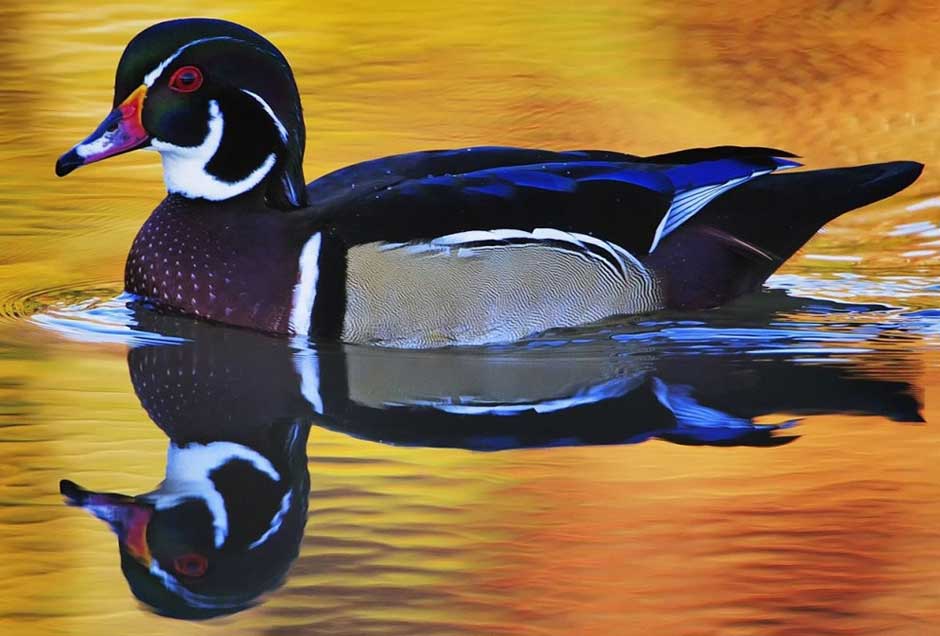
Thanks to its rich and varied collection of birds, this museum is the perfect place to deepen your knowledge of the territory, of the environments that can be observed around Varenna and in general in the provinces of Lecco and Como.
The Civic Museum of Ornithology and Natural Sciences “Luigi Scanagatta” was founded in 1962 by the master Luigi Scanagatta, famous ornithologist, botanist and malacologist. In short, the collection took on enormous importance not only for its size, but also for some rare and difficult to find specimens in this area and preserved here.
Subsequently, the museum was enriched with Father Tarciso Scanagatta’s donation of Luigi Scanagatta’s archive, which includes a scientific library, his epistolary and the malacological collection. The scientific library contains more than 1500 volumes, some of which are ancient, divided into different sections: ornithology, zoology, malacology, botany and mycology.
In addition to the museum’s actual layout, there is also a room dedicated to the “laboratory of the senses“, where, while having fun, one can experience the many opportunities for exchange between man and the environment. For lovers of the subject, not to be missed are the numerous initiatives proposed by the museum during the year, including the observation of fauna and avifauna during the day and at night practiced with the use of infrared observation instruments and remote listening instruments.
5. Walks
The area around the village of Varenna, like the entire area of Lake Como, offers tourists numerous itineraries to enjoy the beauty of the landscape while walking in nature and greenery. Various routes, more or less short and with different degrees of complexity, allow you to explore the context in which this beautiful lake village is set.
To the Source of Fiumelatte
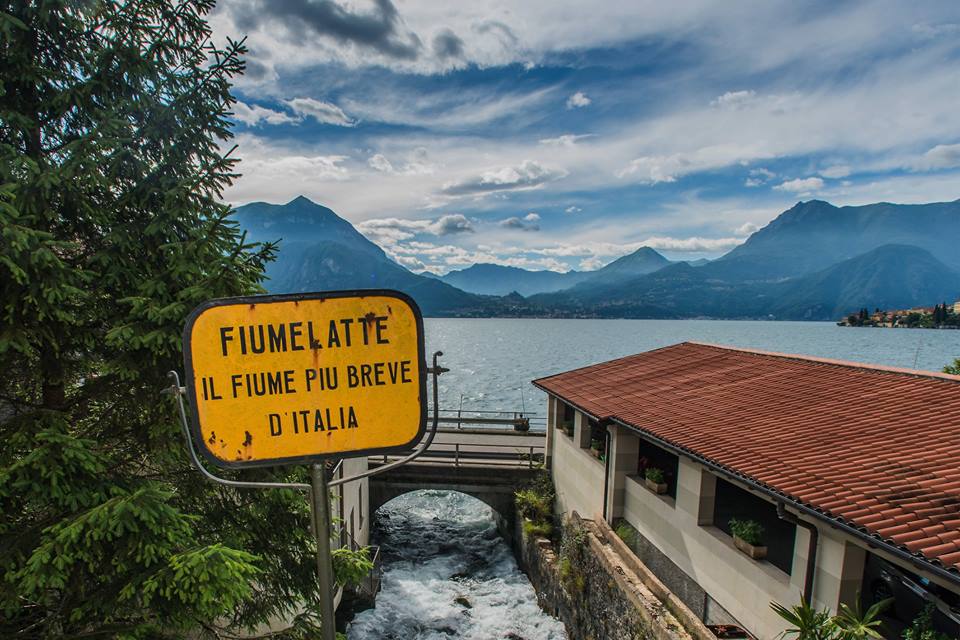
The Fiumelatte is known to be one of the shortest waterways in Italy with only about 250 m. of development, from its point of origin to its dive into the lake. Its thunderous waters are so sparkling that they give it an incredible milky-white colour, a phenomenon from which it takes its name and certainly fascinating to see.
Another curiosity is that the stream is “temporary”, it appears quickly towards the end of March and then disappears in October. This particular peculiarity has led scholars to hypothesize that the Fiumelatte represents an “overflow” of an imposing basin situated in the bowels of the glacial circus of Moncodeno, in the Northern Grigna.
Over the centuries, the river has aroused the curiosity of many, including Leonardo, who mentioned the “Fiumelaccio” in sheet 214 of the Codex Atlanticus. And that same curiosity still arouses it today, attracting every year dozens and dozens of people to admire its very white waters.
How to reach the source
From Piazza San Giorgio, in Varenna, continue southwards, taking the slightly uphill Via Roma, adjacent to the multi-storey car park. Once you reach the cemetery, continue on the staircase on the left, at the end of which begins the real path that runs halfway parallel to the lake and leads to Fiumelatte. We suggest to wear comfortable shoes, to walk easily along the path, even if it is not very difficult.
For those who want to stop near the spring, a small but well-equipped picnic area is located right on the edge of the river.
About halfway between the cemetery and the source of the Fiumelatte we suggest a diversion towards the mountain that in a few minutes leads to another place not to be missed, the Baluardo, a rocky spur surrounded by cypresses, from which you can enjoy an extraordinary view of the town of Varenna and the entire lake centre.
—
Walk to the Vezio Castle
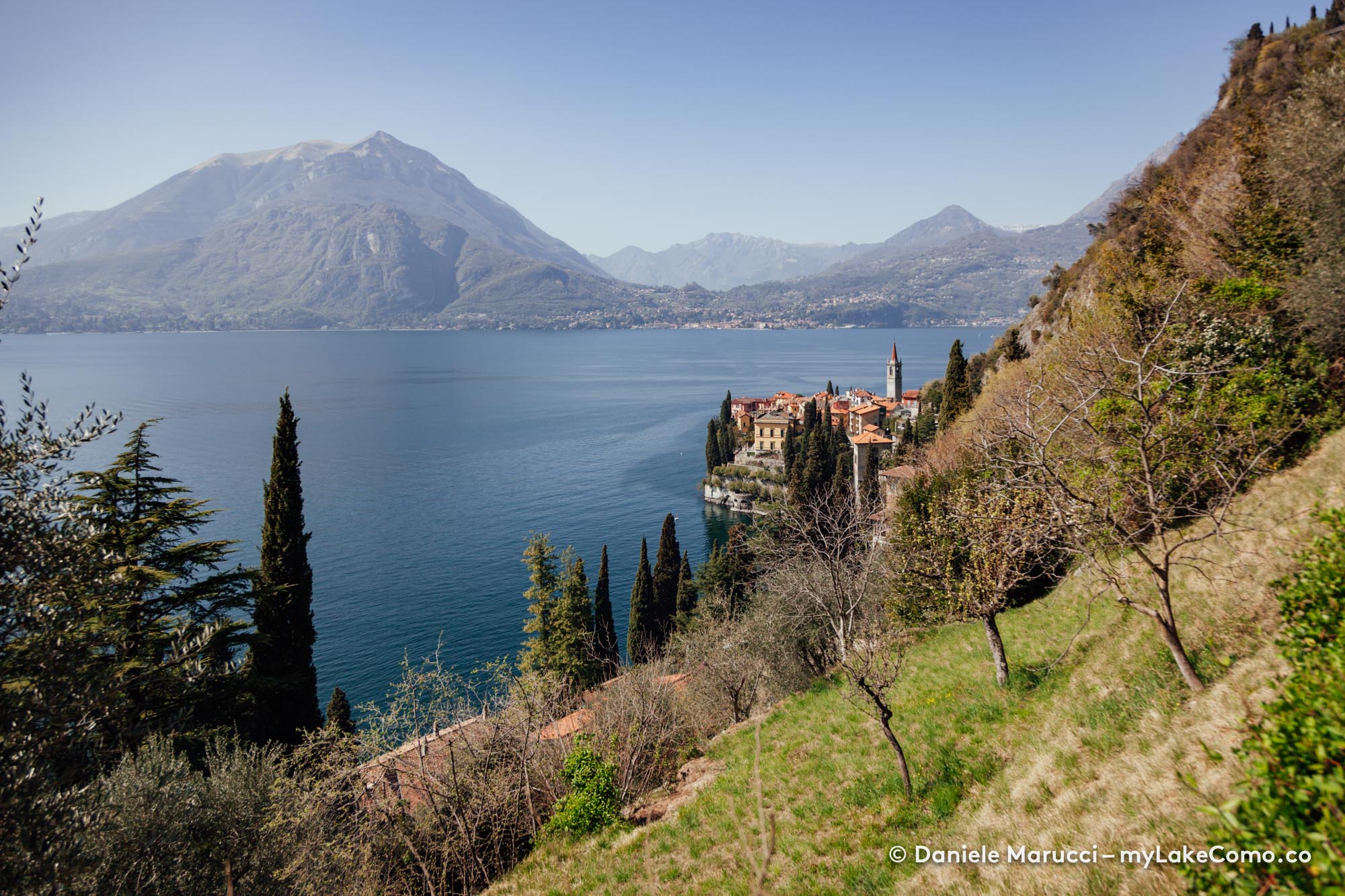
An easy path, lasting 30′, immersed in nature and the history of the Castle.
Near Villa Monastero, take Via Roma, the single-lane paved road leading to the Cemetery. During the climb you will find signs for the panoramic “Scabium” route, which starts from the car park of the former Hotel Eremo Gaudio. This is an ancient itinerary that connects Varenna to the small square in the village of Vezio di Perledo, which lasts about 30 minutes and is part of the more famous Sentiero del Viandante. Once you arrive in the village you can reach the entrance of the Castle in a moment.
The difference in height is about 160 mt.
—
The Greenway of the Patriarchs
A simple 6 km walk (one way), starting from the boat stop, to discover the landscapes of Varenna’s history, through its most beautiful hamlets.
The name derives from “Patriarchitt”, a nickname once given to the people of Varenna because they practised the patriarchal religious rite of Aquileia. Today the “Patriarchs” represent the old people of Varenna, the long-lived and wise ones, and this path of gentle mobility is dedicated to them.
—
Sentiero del Viandante
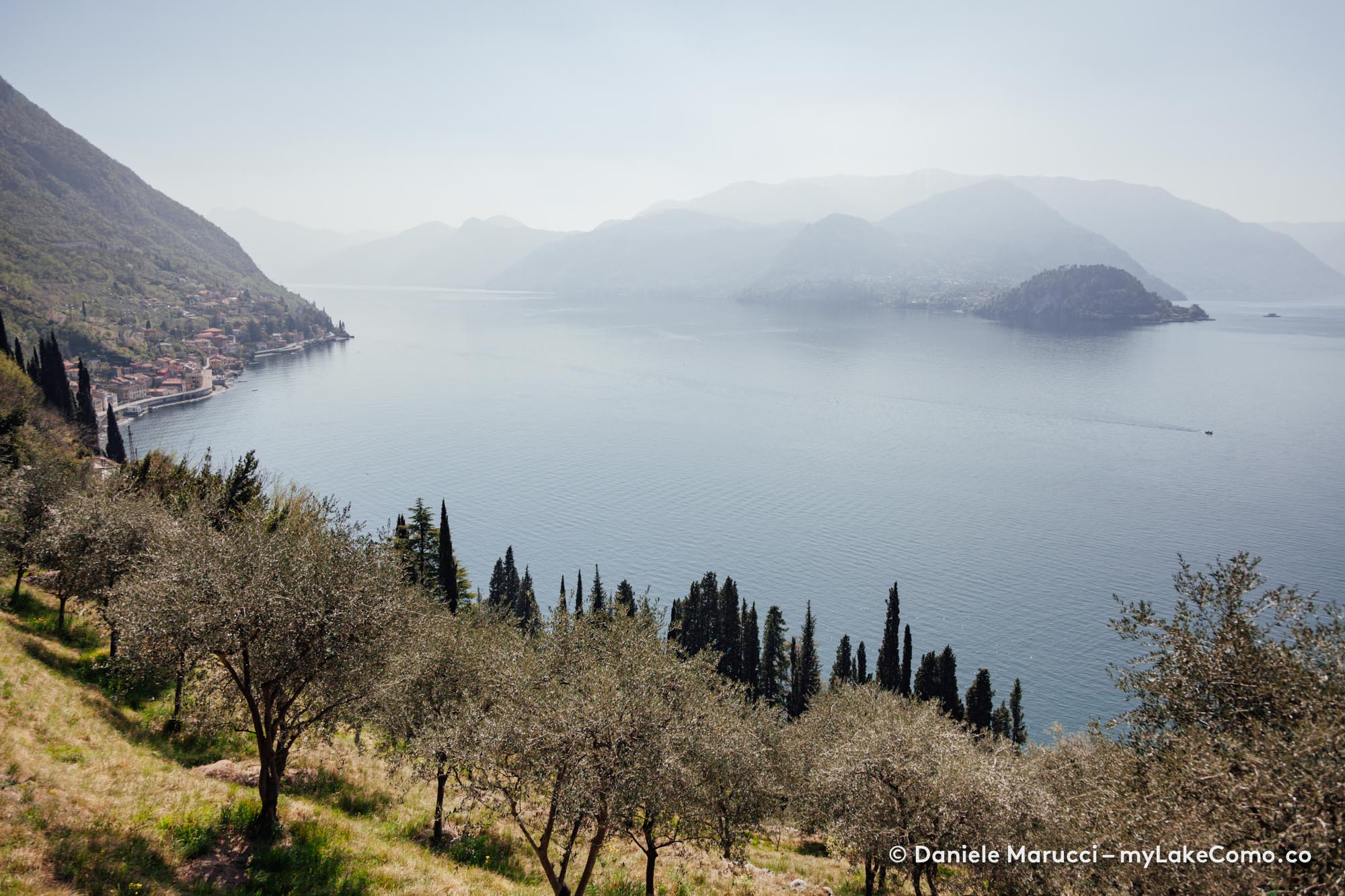
The Sentiero del Viandante (Wayfarer’s Path) is an interesting itinerary of about 45 km, which follows the route from Milan to Switzerland. The route starts in Abbadia Lariana (Lc), near the little church of S. Martino and ends in Piantedo (So), at the sanctuary of the Madonna di Val Pozzo. It dates back to the Roman period and was equipped and secured in 1989.
Whoever walks through it offers the opportunity of an experience in contact with nature and the territory, surrounded by breathtaking views.
Starting from Varenna it is possible to follow three routes: from Varenna to Bellano, from Varenna to Lierna, from Varenna to Albiga.
